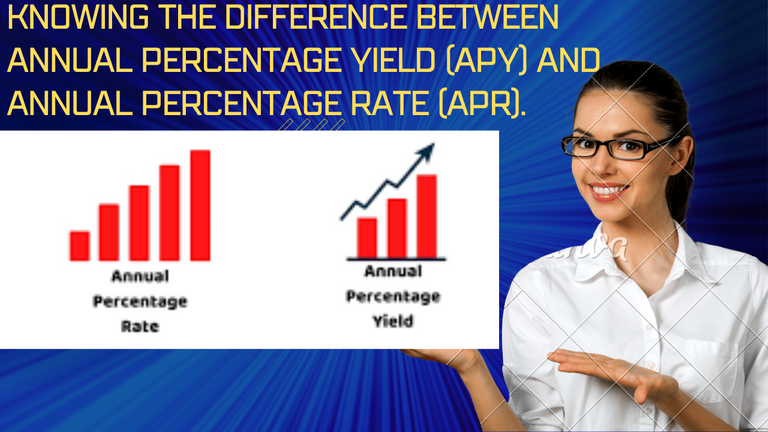The crypto industry is large and has a lot of phrases like "APY" and "APR," which are two confusing words. APY and APR are the two popular words whenever talking about DeFi (decentralized finance) products.

canvas design
The term "Annual Percentage Yield" (APY) refers to a percentage that includes interest that is compounded daily, weekly, monthly, or quarterly. In contrast, "Annual Percentage Rate" (APR) refers to a percentage that excludes interest. The estimate for returns on investment over time might be significantly altered by the straightforward distinction you just read. Understanding how these two phenomenal things are computed and what it means for the return that you receive on your investments is crucial when you have decided to invest your money in a business or in a DeFi product.
APR versus APY
For the purposes of personal finance, APR and APY are both crucial metrics. Let's begin by examining the APR (annual percentage rate). is the interest rate that you, the lender, receive on the money that a borrower uses for a period of more than a year. i.e., the interest rate that a lender receives on the money that a borrower uses for more than a year.
For instance, if you deposit $20,000 at a 20% APR into your savings bank account, you will receive $4,000 in interest after a year. The principal amount of your money, which is $20,000, is multiplied by the APR, which is 20%, to determine your interest rate. This is how your bank will calculate your APR: $20,000 (20 100) = $4,000.
This implies that you will have a total of $14,000 after a year, which includes your principal amount and interest. Now, if you keep saving, in two years, your capital will increase to $18,000. After three years, it will total $18,000, giving you $20,000 for four years. By continuing to save, you will continue to earn interest in this way. That is an investment for you.
Let's first have a thorough understanding of compound interest before looking into APY (annual percentage yield). In essence, compound interest is the process of gaining interest on interest already paid. According to the illustration we just looked at, if your bank deposits interest into your account on a monthly basis, your bank balance will change throughout each month. meaning that the balance in January will be lower and the balance in February will be higher than in January, and vice versa.
Instead of receiving $14,000 at the conclusion of your 12-month savings period, you will get interest payments for each month. The amount on which you earn each month will increase as the months go by, since the interest that you receive each month will be added to the deposit's principal. With that, I can say that compounding refers to the process by which interest accrues more each month.
Let's now say that you deposit $10,000 at a 20% APR with monthly compounding interest into your savings account. You will have $12,429 at the end of a year without having to stress yourself out trying to calculate your interest. The interest earned in this instance after compound interest has been applied is $429.
Longer durations are less profitable than the power of compounding. If you continued to use the same 20% APR product with daily compound interest, you would wind up having $19,309 after three years. You will observe that by doing this, you have accrued **$3,309 **more in interest than if you had used products with a 20% APR.
You might significantly increase the return on your investment by including compound interest (savings). You should also be aware that the interest varies depending on the frequency of compounding. When compounding occurs more frequently, you will be able to earn more money. You will earn more income from daily compounding than from monthly compounding.
Posted Using LeoFinance Beta